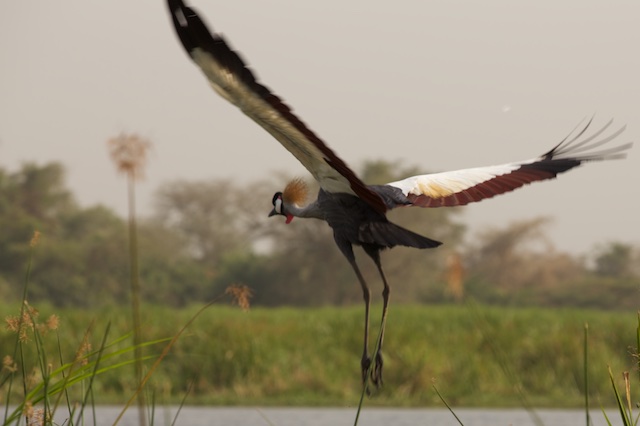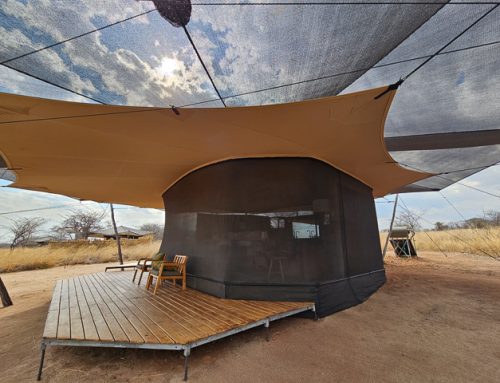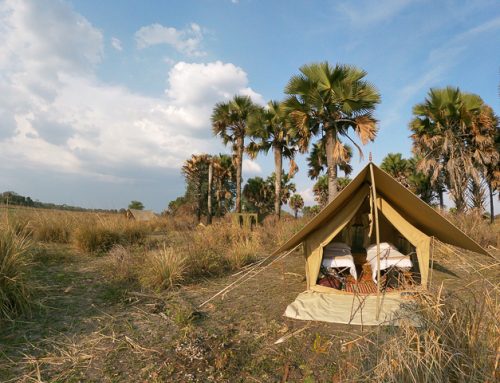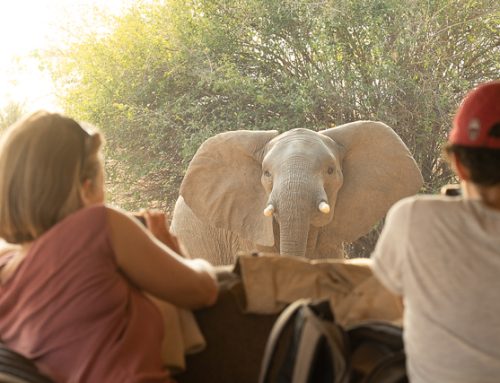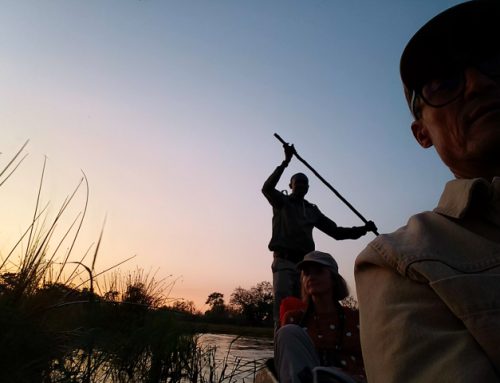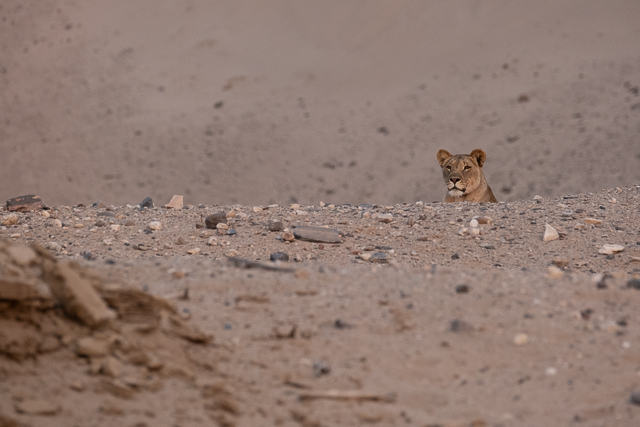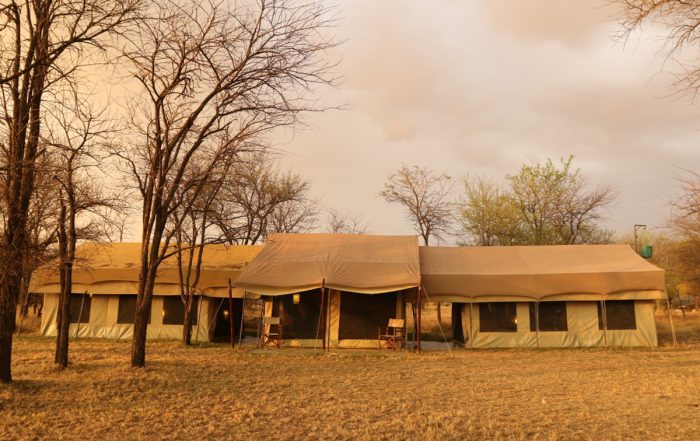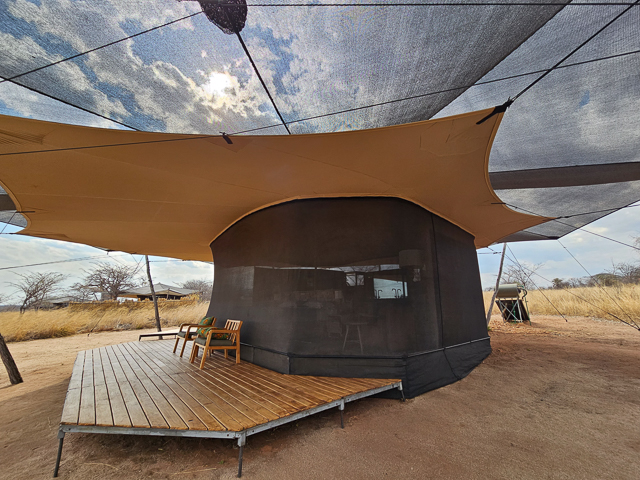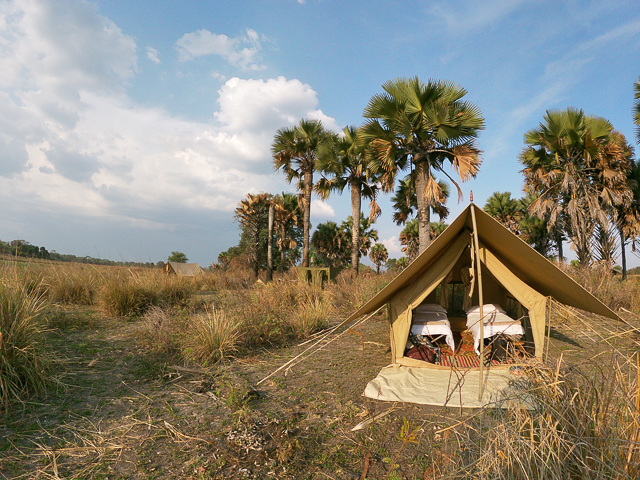Uganda is not a big cat destination, and becomes a place we often visit to track the rare mountain gorillas. This is a fantastic experience but, whenever I am in a country, I have a yearning to see more of it.
In January I was guiding a safari there tracking the mountain gorillas, so I decided to arrive early and have a look at an area I had wanted to visit for ages – Murchinson’s Falls National Park.
The plane flew over the river and landed at an airstrip in the plains on the “north bank”. There my Ugandan driver-guide, James was waiting. That afternoon we went on a “game drive” Murchison’s style, accompanied by a park guide, as well as the driver-guide.
Murchison’s shares some species with the far west of Africa – birds such as the red-throated bee-eater, Abyssinian ground hornbill, and the piapiac, and antelope including the large Jackson’s hartebeest. Other ungulates include scores of Uganda kob, as well as lots of oribi, favoring the burnt patches as usual, and a few journeys of the rare Rothschild’s giraffes. A highlight for me was seeing a patas monkey, the fastest primate, again rare east of here, and two crocodiles in a small waterhole, one trying to attack the other. Blood was spilled, and they were writing around, but in the end it gave up.
The following morning we crossed back over the Victoria Nile on the quaint ferry. We noticed some kob looking alert, so we stopped and watched them for quite a while. They never relaxed and were intent on an area of borassus palms in the distance. Eventually I saw a lioness appear out of the palms, and a short while later we saw another younger lion. Both were very focused, so we followed them off-road … and sure enough a while later we heard them call, and then saw them reunite with another two. A moment in the lives of lions.
We saw several pairs of the spectacular Abyssinian ground hornbills, which are common here. The males have red throat patches and wattles, and the females have blue ones, unlike the (southern) ground hornbill seen east and south of here, both sexes of which have red patches.
The difference between an okay safari and an amazing one are the experiences that you have.
Although the game drives were interesting for me because the landscape was varied and many species are different to other parts of East Africa, great experiences were limited. There are other equally regulated areas that have a higher predator density and a better road infrastructure, where the limitations are balanced by the rewards.
That afternoon I took a private boat trip upriver. Countless hippos were basking, or rushed into the water when we approached. A few minutes later we saw a herd of elephants crossing the Victoria Nile. We puttered slowly towards them and had fantastic views of a nervous bull keeping a very good eye on us. We got close enough to smell them. This eventually became one of those wildlife afternoons where there was rarely a minute without a new sighting – all of them excellent.
I was able to get fantastic photos of some of the birds – bee-eaters (including the stunning red-throated and equally marvellous northern carmine-bee-eaters), kingfishers, herons, egrets, cormorants, storks, sandpipers, pratincoles, …. And while we were watching a herd of elephants, one of which was feeding about 5m (15ft) from the end of the boat, we saw a shoebill. These are one of the most sought after African bird species to see by birders. They are an unusual stork-like solitary bird that often stays utterly still, only dashing at the last second to scoop up its prey of a lungfish, catfish, frog, monitor lizard or other tasty morsel. While I was hoping to see one, I didn’t expect it!
The boat ride ended when I was dropped off at a mooring below Murchison’s Falls, a favorite fishing spot for anglers, and from there I hiked up to the top of these raging falls, forced through a narrow gorge. James was waiting at the top, and on our way back to camp we saw the astounding standard-winged nightjar. The male has enormous feathers to attract a female. They are so large that he appears to have two other birds constantly shadowing him as he flies!
After such an amazing time on the Victoria Nile, I went for two more rides on the river, one downstream as far as the delta, near the river’s departure though Lake Albert. The other was upstream again, in the hope of another chance at seeing the shoebill. Both were outstanding, with lots of sightings of birds, mammals and reptiles.
At one point we were watching a bush fire slowly approach the river, observing how elephants and a waterbuck were reacting to it, when we noticed a lioness stalking! She was obviously taking advantage of the confusion that the bushfire was creating. Unfortunately she spotted us in the boat and slunk away into a patch of forest, where she would have had to lie low, as it was thick with elephants.
A short while later we found the shoebill again. This time we parked the boat in the reeds and watched it for ages. We were rewarded when we saw it catch and eat a fish (I posted a video clip here). It then it almost became inquisitive, slowly approaching the boat which was partly hidden in the reeds, before it flew a few metres away from us.
We returned to camp on the south bank at dusk, letting the river take us, as hippos and us eyed each other through an amber glow of twilight.
What an astonishing park. The experience and the sightings I enjoyed in a boat on the Victoria Nile was such a pleasure, and the game drives and hikes added variety to the activities. I definitely want to come back here and I hope that some of you will enjoy this as well as tracking mountain gorillas some time.
Justin

